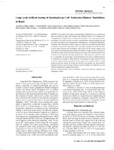Use este identificador para citar ou linkar para este item:
http://www.alice.cnptia.embrapa.br/alice/handle/doc/1002054Registro completo de metadados
| Campo DC | Valor | Idioma |
|---|---|---|
| dc.contributor.author | WALDER, J. M. M. | pt_BR |
| dc.contributor.author | MORELLI, R. | pt_BR |
| dc.contributor.author | COSTA, K. Z. | pt_BR |
| dc.contributor.author | FAGGIONI, K. M. | pt_BR |
| dc.contributor.author | SANCHES, P. A. | pt_BR |
| dc.contributor.author | PARANHOS, B. A. J. | pt_BR |
| dc.contributor.author | BENTO, J. M. S. | pt_BR |
| dc.contributor.author | COSTA, M. de L. Z. | pt_BR |
| dc.date.accessioned | 2014-12-09T11:11:11Z | pt_BR |
| dc.date.available | 2014-12-09T11:11:11Z | pt_BR |
| dc.date.created | 2014-12-09 | pt_BR |
| dc.date.issued | 2014 | pt_BR |
| dc.identifier.citation | Scientia Agricola, v. 71, n. 4, p. 281-286, jul./aug. 2014. | pt_BR |
| dc.identifier.issn | 0103-9016 | pt_BR |
| dc.identifier.uri | http://www.alice.cnptia.embrapa.br/alice/handle/doc/1002054 | pt_BR |
| dc.description | Some species of the genus Anastrepha (Diptera: Tephritidae) are successfully man - aged by matching the sterile insect technique with parasitoid releases. Such strategies used in integrated pest management can be implemented only where insect mass-rearing programs are feasible. In this study, we show the process of domestication, rearing technology and qual - ity control data obtained from 54 generations of Anastrepha sp.1 aff. fraterculus (Wiedemann,1830) kept under fully artificial conditions. Eggs were collected by an artificial oviposition panel consisting of one side of the cage made of blue voile fabric externally covered with a thin layer of silicon rubber. They were then air-bubbled in water at 25 ºC for 48 h before seeding. Larvae were reared on the regular laboratory artificial diet with 66 % of agar reduction turning over a semi-liquid diet, which reduced costs and improved insect quality. The adult and larval diets were composed of local ingredients including hydrolyzed yeast. When large-scale production of this fly is contemplated, the critical stage is larval development. This system of artificial rearing for A. fraterculus sp.1 developed in Brazil, allows for the production of a large number of insects of excellent quality using local ingredients and less agar in diet composition than the original medium used for this species. By reducing the interval of egg collection, the system might be optimized in terms of insect yield and, therefore, meet the demands of A. fraterculus sp.1 with regard to integrated pest management purposes. | pt_BR |
| dc.language.iso | por | pt_BR |
| dc.rights | openAccess | pt_BR |
| dc.subject | Manejo integrado de pragas | pt_BR |
| dc.subject | Domesticação de inseto | pt_BR |
| dc.subject | Produção de inseto | pt_BR |
| dc.subject | Inseto estéril | pt_BR |
| dc.subject | Insect domestication | pt_BR |
| dc.subject | Insect production | pt_BR |
| dc.subject | Manejo de praga | pt_BR |
| dc.title | Large scale artificial rearing of Anastrepha sp.1 aff. fraterculus (Diptera: Tephritidae) in Brazi. | pt_BR |
| dc.type | Artigo de periódico | pt_BR |
| dc.date.updated | 2014-12-29T11:11:11Z | pt_BR |
| dc.subject.thesagro | Inseto | pt_BR |
| dc.subject.nalthesaurus | Sterile insect technique | pt_BR |
| dc.subject.nalthesaurus | Integrated pest management | pt_BR |
| riaa.ainfo.id | 1002054 | pt_BR |
| riaa.ainfo.lastupdate | 2014-12-29 | pt_BR |
| dc.identifier.doi | http://dx.doi.org/10.1590/0103-9016-2013-233 | pt_BR |
| dc.contributor.institution | JULIO MARCOS MELGES WALDER, UNIVERSITY OF SÃO PAULO | pt_BR |
| dc.contributor.institution | RENATA MORELLI, UNIVERSITY OF SÃO PAULO | por |
| dc.contributor.institution | KAREN ZAMBONI COSTA, UNIVERSIDADE DE SÃO PAULO | por |
| dc.contributor.institution | KENYA MARTINS FAGGIONI, UNIVERSIDADE DE SÃO PAULO | por |
| dc.contributor.institution | PATRÍCIA ALESSANDRA SANCHES, UNIVERSITY OF SÃO PAULO | por |
| dc.contributor.institution | BEATRIZ AGUIAR GIORDANO PARANHOS, CPATSA | por |
| dc.contributor.institution | JOSÉ MAURÍCIO SIMÕES BENTO, UNIVERSITY OF SÃO PAULO | por |
| dc.contributor.institution | MARIA DE LOURDES ZAMBONI COSTA, UNIVERSITY OF SÃO PAULO. | por |
| Aparece nas coleções: | Artigo em periódico indexado (CPATSA)  | |
Arquivos associados a este item:
| Arquivo | Descrição | Tamanho | Formato | |
|---|---|---|---|---|
| Beatrizartigo.pdf | 165,89 kB | Adobe PDF |  Visualizar/Abrir |









